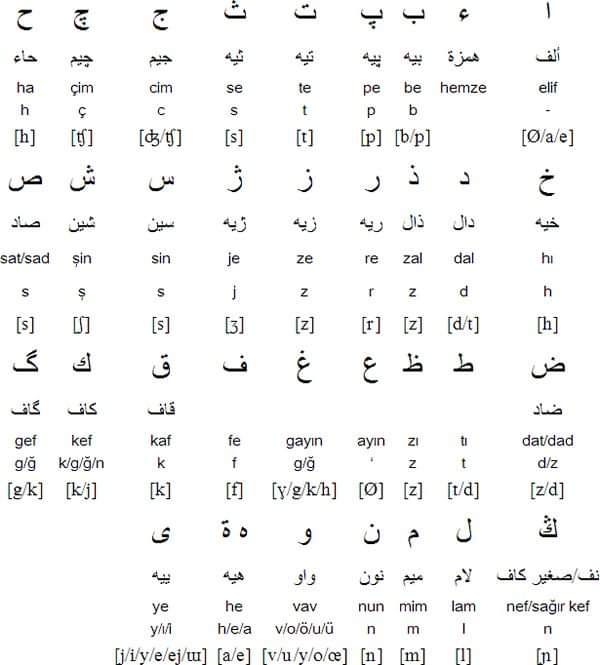History of the Ottoman Turkish language written in Arabic letters

The Ottoman Turkish language (Osmani tongue) is a language that was used as the administrative and literary language of the Ottoman Empire, including extensive borrowing from Arabic in addition to Persian, written as an alternative to Arabic writing. The modern Turkish language has been largely influenced by the old Ottoman Turkish language.
Ottoman was strongly influenced by Arabic and Persian, up to 88% of its vocabulary is composed of Arabic and Persian words. As in most Turkic and other foreign languages of Muslim communities, Arabic borrowings were borrowed through Persian, and not through direct exposure of Ottoman Turkish to Arabic.
In the Ottoman era, one could find entire paragraphs in Arabic and Persian embedded in the text. However, this was not just an intensive lending of words, but besides them a lot of grammatical systems of Persian and Arabic.
The Arabic alphabet was used in writing the Ottoman Turkish language during the period of the Ottoman Empire and in the first years of the establishment of the Republic of Turkey until it was replaced by modern letters taken from Latin; in 1928.
Ottoman Turkish (1299-1928) is written from right to left like Arabic, and the number of letters in the alphabet is 33, of which 28 were taken from Arabic, four from Persian, and only one is considered pure Turkish.
The Ottoman Turkish alphabet is a form of the Persian-Arabic alphabet that, although unable to distinguish between O and U, was generally suitable for writing Turkish words instead of Persian-Arabic words. All vowels in Turkish words were written and had systematic spelling rules, and rarely needed to be memorized. Other Oghuz Turkic languages such as Azerbaijani and Turkmen enjoyed a high degree of written mutual intelligibility as the Ottoman Alphabet catered to obsolete Turkic alphabets and letters which showed the common Anatolian Turkic history with Azerbaijan and Turkmen. However, the Ottoman Turkish alphabet was unsuitable for Arabic and Persian loanwords that students learning Turkish would have to memorize because it would omit vowels, making it difficult to read. The Arabic language has many consonants that are not found in the Turkish language, which makes many Arabic letters unnecessary.
The introduction of the Telegraph and the printing press in the 19th century revealed even more weaknesses in the Arabic script.
The difference between the Ottoman and Turkish language
The alphabet is not the only difference between the Ottoman and Turkish languages, and the Turkish language is not the Ottoman language written in Latin letters, and the Ottoman language is not the Turkish language in Arabic letters, and therefore we cannot consider them two sides of the same coin. The translator of the Turkish language cannot be able to translate the Ottoman language once he learns the Arabic or Ottoman alphabet, as he must be familiar with a lot of Arabic and Persian vocabulary, the use of which in Ottoman may differ slightly or a lot from its use in the Arabic and Persian languages.
Since its foundation, the modern republic of Turkey has made intensive efforts to Turkify the Ottoman language by gradually purifying it from non-Turkish vocabulary, while also gradually grafting it with vocabulary from other European and Western languages.
